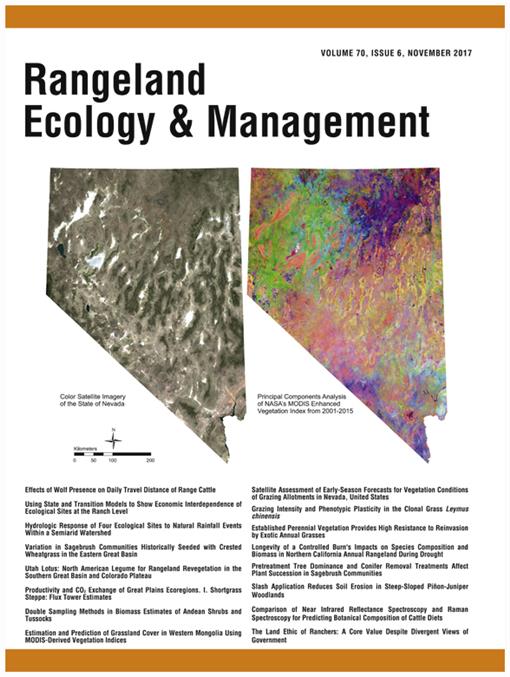Controlled burning timed in early summer can dramatically change the species composition of annual rangeland the following season. Although this has been well documented, the longevity of these shifts has not. Presented is a case study of a single 200-ha burn to begin to understand how long plant communities and biomass production remain diverged between burned and unburned annual rangeland. Species composition and biomass production were monitored before and for 3 yr after burning. Burning drastically reduced medusahead (Taeniatherum caputmedusae; P < 0.01) the following year from 69% in the control to 4% cover in the area burned. In the same year, filaree (Erodium spp.; P < 0.01) filled in the area left vacant, subsequently lessening production (P < 0.01) in the burn area by over half that of the control. No difference existed in the occurrence of native wildflower species due to fire. Three consecutive drought years following the burn shifted the control from medusahead dominance to filaree in a linear fashion. At the same time, in the burned area medusahead cover increased fourfold between 1 and 3 yr after the burn. By 3 yr post burning, the area had 4% more medusahead cover than the control and was equal in filaree, rose clover (Trifolium hirtum), and soft brome (Bromus hordeaceus) cover. Our results suggest that a controlled burn followed by drought can cause the divergence in species composition and production to become void in as little as 3 yr after a well-timed burn in a low-elevation annual rangeland system.
How to translate text using browser tools
1 November 2017
Longevity of a Controlled Burn's Impacts on Species Composition and Biomass in Northern California Annual Rangeland During Drought
Josh Davy,
Katherine Dykier
ACCESS THE FULL ARTICLE
Fire Species Composition
forage
forage production
weed control





